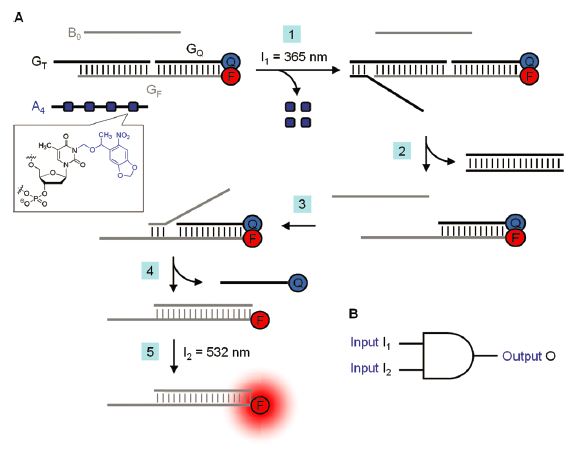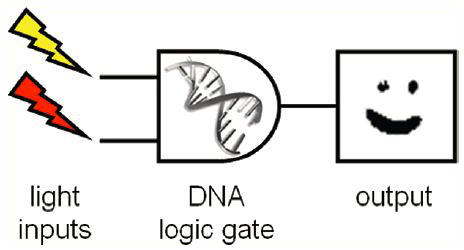Unifying silicon- and DNA-based computing
February 20, 2012
A North Carolina State University chemist has found a way to give DNA-based computing better control over logic operations.
His work could lead to interfacing DNA-based computing with traditional silicon-based computing.
The idea of using DNA molecules to perform computations is not new; scientists have been working on it for over a decade. DNA has the ability to store much more data than conventional silicon-based computers, as well as the potential to perform calculations in a biological environment — inside a live cell, for example. But the technology is still limited in terms of the ability to control when and where particular computations occur.
In DNA computing, logic gates are created by combining different strands of DNA, rather than by a series of transistors. The drawback is that DNA computation events normally take place in a test tube, where the sequence of computation events cannot be easily controlled with spatial and temporal resolution. So no one can tell them when or where to work, making it difficult to create sequences of computational events.

Light-triggered DNA-based AND gate using irradiation at 365 and 532 nm as input signals I1 and I2, respectively, and fluorescence as the output signal. The NPOM (6-nitropiperonyloxymethylene) caging group installed on thymidine nucleotides is represented by a blue square. Quencher Q = Iowa Black RQ. Fluorophore F = tetramethylrhodamine (TAMRA). (B) AND gate electrical symbol defining inputs I1 and I2 and the output O. (Credit: Alex Prokup et al./Journal of the American Chemical Society)
Silicon-DNA computer interfaces
Dr. Alex Deiters, associate professor of chemistry at NC State, developed a method for controlling a logic gate (for adding, subtracting, etc.) within a DNA-based computing system. He addressed the control problem by making portions of the input strands of DNA logic gates photoactivatable — controllable by ultraviolet (UV) light. The process is known as photocaging. Deiters successfully photocaged several different nucleotides on a DNA logic gate known as an AND gate.
When UV light was applied to the gate, it was activated and completed its computational event, showing that photoactivatable logic gates offer an effective solution to the “when and where” issues of DNA-based logic gate control.
Deiters hopes that using light to control DNA logic gates will give researchers the ability not only to create more complicated, sequential DNA computations, but also to create interfaces between silicon and DNA-based computers.
“Since the DNA gates are activated by light, it should be possible to trigger a DNA computation event by converting electrical impulses from a silicon-based computer into light, allowing the interaction of electrical circuits and biological systems,” Deiters says. “Being able to control these DNA events both temporally and spatially gives us a variety of new ways to program DNA computers.”
Ref.: Alex Prokup et al., DNA Computation: A Photochemically Controlled AND Gate, Journal of the American Chemical Society, 2012 [DOI: 10.1021/ja210050s]
Also see:
‘Noise’ tunes logic circuit made from virus genes
Scientists create modular logic gates from bacteria and DNA
Researchers build largest biochemical circuit out of small synthetic DNA molecules
DNA logic gates herald injectable computers
‘DNA computer’ is unbeatable at tic-tac-toe

